Mastering the Art of Lathe Work: A Guide to Using a Skew Chisel

The lathe is an essential tool for any woodworker, allowing them to shape and manipulate wood into various forms and designs. And one of the most versatile tools used on a lathe is the skew chisel. In the hands of a skilled craftsman, the skew chisel can create intricate details, smooth curves, and clean cuts that can elevate any woodworking project to a work of art.
The skew chisel is a long, flat tool with a beveled edge on both sides. Unlike other tools used on the lathe, the skew chisel is held at an angle to the workpiece, which allows for more control and precision. The sharp edge of the skew chisel acts like a plane, slicing through the wood fibers, resulting in a smooth finish.
However, mastering the use of the skew chisel requires practice, skill, and technique. It is a tool that demands respect and understanding to ensure safe and effective use. In this guide, we will explore the various techniques and methods for using a skew chisel, so you can develop the necessary skills to create stunning woodturning projects.
Benefits of Lathe Work
There are many benefits to learning and practicing lathe work. Whether you are a beginner or an experienced woodworker, using a lathe can enhance your skills and provide you with unique opportunities to create beautiful and functional pieces.
1. Versatility
One of the greatest advantages of lathe work is its versatility. A lathe allows you to work with a variety of materials, including wood, metal, and plastics. This opens up a wide range of possibilities and allows you to experiment with different techniques and designs.
2. Creativity
Lathe work provides an outlet for creativity and self-expression. By shaping and carving materials on a lathe, you can turn a simple piece of wood or metal into a stunning work of art. The possibilities are endless, and you have the freedom to create unique and personalized pieces that reflect your own style and vision.
3. Skill Development
Working with a lathe requires a certain level of skill and precision. As you practice lathe work, you will develop and refine your woodworking skills, such as using different turning techniques, sharpening and using tools, and creating intricate details. This constant learning and improvement will help you become a better woodworker overall.
4. Time Efficiency
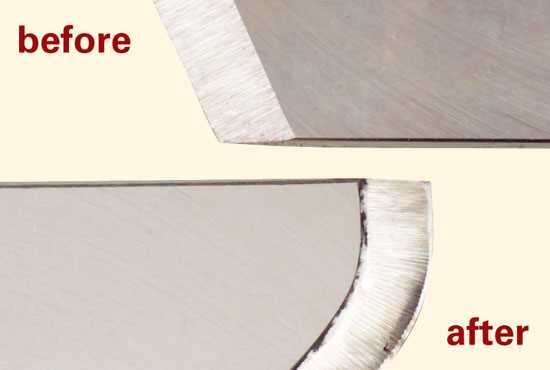
Lathe work can be quite efficient when compared to other woodworking techniques. Once you have set up your lathe and become familiar with the tools and techniques, you can quickly and easily produce multiple pieces of the same design. This makes lathe work ideal for creating small items like pens or bowls in a short amount of time.
5. Restorative Benefits
Engaging in lathe work can also provide therapeutic benefits. The rhythmic and repetitive motions of turning a piece of material on a lathe can be calming and help reduce stress. It allows you to focus your mind and attention on the task at hand, providing a sense of relaxation and mindfulness.
6. Practicality
The pieces created through lathe work can also have practical applications. From decorative bowls and vases to functional handles and tool parts, the items you make on a lathe can be used in your everyday life or given as unique and thoughtful gifts.
7. Community
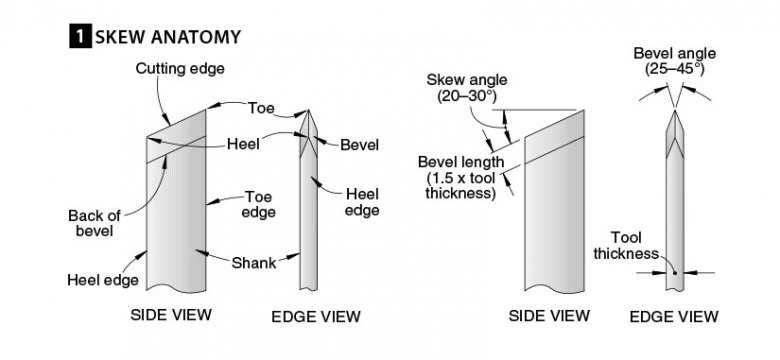
Lathe work has a vibrant and supportive community. Whether online or offline, there are many resources available to help you learn and grow as a lathe worker. You can join forums, attend workshops, or connect with other woodworkers who share your passion for lathe work. This sense of community can provide inspiration, encouragement, and opportunities for collaboration.
| Benefits of Lathe Work | Summary |
|---|---|
| Versatility | Allows you to work with various materials and techniques |
| Creativity | Provides an outlet for self-expression and unique designs |
| Skill Development | Helps improve woodworking skills and attention to detail |
| Time Efficiency | Allows for rapid production of multiple pieces |
| Restorative Benefits | Offers stress relief and mindfulness |
| Practicality | Pieces created can have practical uses in everyday life |
| Community | Connect with a supportive community of lathe workers |
Enhancing Creativity and Skills
Mastering the art of lathe work requires not only technical skills but also creativity. With a skew chisel, woodturners have the opportunity to explore their artistic side and push the boundaries of what is possible. Here are some ways you can enhance your creativity and skills:
1. Experiment with Different Designs
Don’t be afraid to try out different designs and shapes with your skew chisel. This tool allows for intricate details and fine lines, making it perfect for creating unique and eye-catching pieces. Whether it’s a decorative bowl, vase, or spindle, let your imagination run wild and see what you can create!
2. Combine Different Wood Types
Woodturning offers endless possibilities when it comes to wood selection. Experiment with different wood types and combine them to create beautiful patterns and contrasts. Mix light and dark woods or explore the unique characteristics of exotic woods. The possibilities are only limited by your creativity.
3. Explore Texture and Finishing Techniques
Using a skew chisel allows you to create various textures and finishes on your turned pieces. Try techniques like carving, burning, or sanding to give your work a distinct look and feel. Experiment with different sanding grits and finishes to achieve the desired result. Remember, the journey of mastering lathe work is also about discovering new techniques along the way.
4. Learn from Others
One of the best ways to enhance your creativity and skills is by learning from others. Attend workshops, join woodturning associations, or even watch online tutorials to gain new insights and techniques. Surrounding yourself with experienced woodturners will not only inspire you but also help you grow as a craftsman.
5. Practice, Practice, Practice
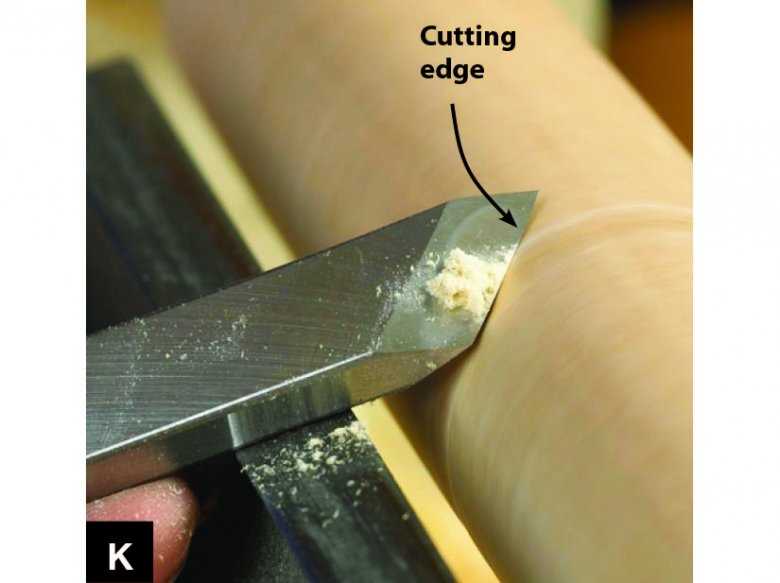
Mastery in any craft takes time and practice. The more you work with your skew chisel, the better you’ll become at controlling the tool and executing your ideas. Dedicate regular time to practice and don’t be afraid to make mistakes. Every piece you create is an opportunity to learn and improve.
Remember, mastering the art of lathe work is a lifelong journey. By enhancing your creativity and skills, you can continue to challenge yourself and create truly exceptional pieces with your skew chisel.
Creating Unique and Customized Pieces
When it comes to lathe work, one of the most exciting aspects is the ability to create unique and customized pieces. Whether you’re a beginner or an experienced woodturner, using a skew chisel allows you to bring your creative ideas to life.
1. Sketching Your Design
The first step in creating a unique piece is to sketch out your design. This will help you visualize the final product and determine the dimensions and shape you want to achieve. You can use pen and paper or digital software to create detailed sketches and make any necessary adjustments before getting started on the lathe.
2. Choosing the Right Wood
Selecting the right type of wood is crucial in creating a customized piece. Different types of wood have unique characteristics, including color, grain patterns, and hardness. Consider the final look you want to achieve and choose a wood that will complement your design. Hardwoods like maple or cherry are excellent choices for intricate details, while softer woods like pine or cedar are ideal for pieces with a rustic or natural feel.
3. Preparing the Wood Blank
Before you start turning the wood on the lathe, it’s important to prepare the wood blank. This involves cutting the wood to the desired length and securing it on the lathe using a chuck or faceplate. Make sure the wood is centered and securely fastened to avoid any accidents while working.
4. Shaping with the Skew Chisel
The skew chisel is an incredibly versatile tool that allows you to shape and refine your piece. With proper technique and practice, you can create intricate details, smooth curves, and clean cuts. Keep in mind that the skew chisel requires a steady hand and precise movements, so take your time and work slowly to achieve the desired results.
5. Adding Personal Touches
To make your piece truly unique, consider adding personal touches. This could include carving patterns, adding inlays or decorative elements, or applying a custom finish. These personalized details will make your piece stand out and showcase your craftsmanship.
6. Finishing and Sanding
Once you’ve shaped and added your personal touches, it’s time to finish and sand the piece. Finishing enhances the natural beauty of the wood and protects it from wear and tear. Apply a coat of your chosen finish, such as varnish or oil, following the manufacturer’s instructions. After the finish has dried, sand the piece using progressively finer grit sandpaper to achieve a smooth and polished surface.
7. Displaying and Enjoying Your Creation
After all the hard work and effort you’ve put into creating your unique and customized piece, it’s time to proudly display and enjoy it. Whether it’s a decorative bowl, an intricately turned spindle, or a one-of-a-kind ornament, your creation will undoubtedly become a cherished item that can be enjoyed for years to come.
Developing Patience and Focus
Introduction
Developing patience and focus is crucial for anyone looking to master the art of lathe work using a skew chisel. It takes time and dedication to hone your skills and produce high-quality results. In this section, we will explore the importance of patience and focus in lathe work and provide some tips for developing these qualities.
The Importance of Patience
Patience is a virtue that cannot be underestimated in lathe work. It is essential to have patience when working with a skew chisel as it requires a steady hand and careful attention to detail. Rushing through the process can result in mistakes and a lackluster finished product.
Patience allows you to take your time and execute each cut with precision. It allows you to carefully observe the wood grain and make adjustments as necessary. With patience, you can ensure that each cut is clean and smooth, resulting in a beautifully turned piece.
The Role of Focus
Focus complements patience in lathe work. It involves directing your attention towards the task at hand and blocking out distractions. When using a skew chisel, it is important to concentrate on the wood and the tool, ensuring that you are applying the correct pressure and maintaining proper control.
Distractions can lead to accidents or mistakes, so developing focus is essential. One way to improve focus is to create a dedicated workspace, free from clutter and distractions. This will help you to mentally prepare for each turning session and focus solely on your lathe work.
Tips for Developing Patience and Focus
- Start with small, simple projects: Begin your lathe work journey by starting with small, simple projects. This will allow you to practice patience and focus on basic techniques. As you gain confidence, you can gradually move on to more complex projects.
- Take breaks: Lathe work requires a lot of concentration and physical effort. It is important to take regular breaks to rest and refresh your mind. This will help you maintain your patience and focus throughout your turning sessions.
- Practice mindfulness: Mindfulness is the practice of being fully present in the moment. Incorporating mindfulness techniques into your lathe work can help you stay focused and maintain a calm and patient mindset.
- Learn from mistakes: Mistakes are inevitable in any craft. Instead of getting frustrated, use them as learning opportunities. Analyze what went wrong and make adjustments for the next project. This process will help you improve your skills and become more patient and focused.
- Seek guidance and feedback: Don’t hesitate to seek guidance from experienced woodturners or join a lathe work community. They can provide valuable advice and feedback on your technique, helping you improve and stay motivated.
Conclusion
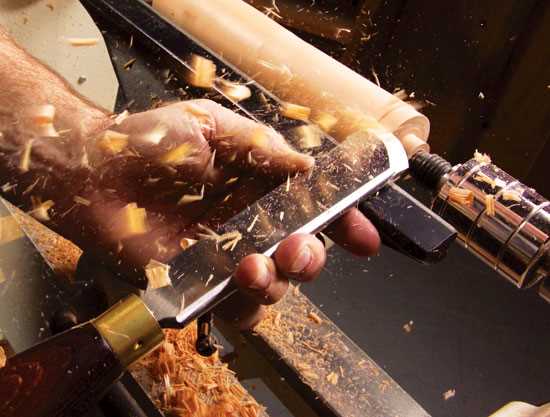
Developing patience and focus is a continuous process in lathe work. As you practice and refine your skills with a skew chisel, these qualities will become second nature. Remember to be patient with yourself and enjoy the journey of mastering the art of lathe work. With dedication and focus, you will achieve remarkable results.
Understanding the Purpose and Design
The skew chisel is a versatile tool used in lathe work for shaping and finishing cylindrical objects. Its purpose is to remove material efficiently and create smooth, clean cuts on the workpiece. The design of the skew chisel allows for precise control and maneuverability, making it an essential tool for woodturners of all skill levels.
The skew chisel has a long, flat blade with a beveled edge on both sides. It is typically ground to a pointed shape, although variations in blade profile are available to suit different cutting techniques and projects. The bevel angle and length of the blade can also vary, affecting the tool’s cutting performance.
Design Features
The main design features of a skew chisel include:
- Handle: The handle provides a comfortable grip and allows for precise control of the tool. It is usually made of wood or metal and may have a lacquered finish for durability.
- Blade: The blade is the working part of the chisel, and it is made from high-speed steel or carbon steel. The blade’s length can vary, but it is typically between 6 and 12 inches long. The beveled edges are ground to a sharp point, allowing the tool to slice through wood fibers with ease.
- Bevel: The bevel is the angled surface along the edge of the blade. It determines the cutting angle and helps reduce friction when cutting. Skew chisels can have a single bevel on one side or be double beveled for versatility.
- Tang: The tang is the part of the blade that extends into the handle. It provides stability and strength to the tool.
Usage
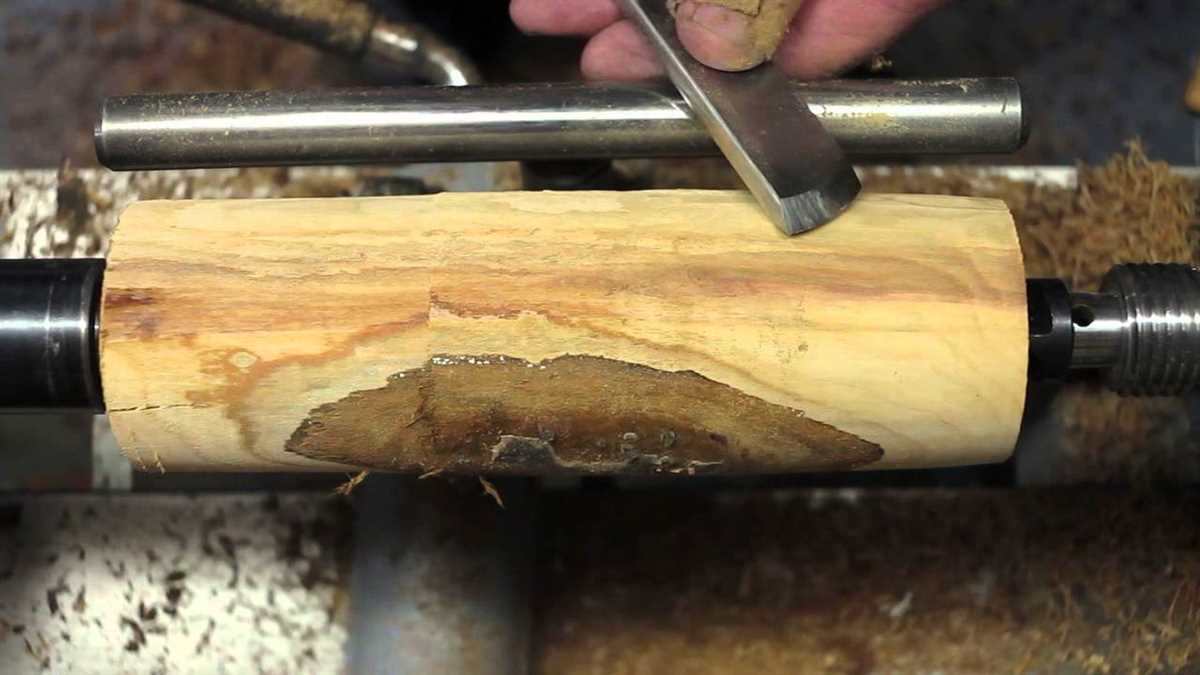
The skew chisel is primarily used for making spindle cuts, such as turning chess pieces, table legs, or chair spindles. It is also useful for cutting beads, coves, and other decorative details on turned objects.
When using a skew chisel, it is essential to hold the tool at the correct angle to achieve the desired cut. The blade should contact the workpiece with the bevel rubbing gently. The angle of the cut and the direction of the skew will affect the shape of the cut and the finish left behind.
Skew chisels require a steady hand and practice to master, but once mastered, they can produce beautiful results. With proper technique and a sharp edge, the skew chisel can be a versatile and indispensable tool in a woodturner’s workshop.
Different Types and Variations
The skew chisel is a versatile tool that can be used for a wide range of turning tasks. While the basic design of the skew chisel remains the same, there are several different types and variations that can be found on the market.
1. Standard Skew Chisel
The standard skew chisel is the most common type and is widely used by woodturners. It has a straight cutting edge and beveled edges on both sides. The cutting edge is typically ground at an angle of around 20 degrees.
2. Round Skew Chisel
The round skew chisel has a rounded cutting edge, which makes it easier to control and maneuver. It is often used for spindle work and making detailed cuts.
3. Beading Skew Chisel
The beading skew chisel has a V-shaped cutting edge that is specifically designed for creating decorative beads and grooves. It is commonly used for adding intricate details to turned objects.
4. Parting Skew Chisel
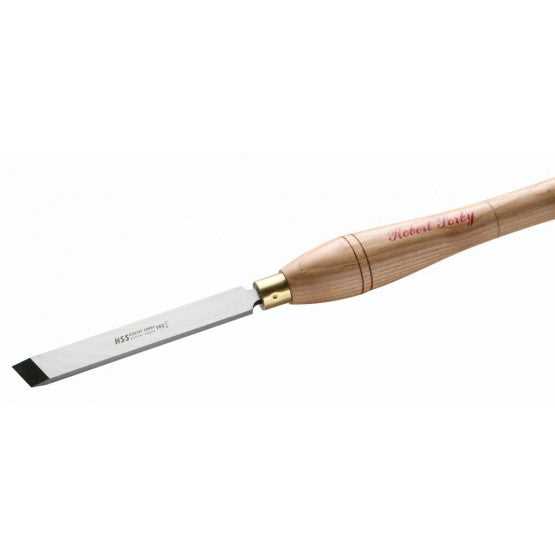
The parting skew chisel has a thin and narrow blade that is used for cutting through the wood and creating deep grooves. It is often used for making tenons, mortises, and other detailed cuts.
5. Oval Skew Chisel
The oval skew chisel has an oval-shaped cutting edge, which provides more control and stability when cutting. It is often used for shaping and smoothing curved surfaces.
6. Fluted Skew Chisel
The fluted skew chisel has flutes or channels on the cutting edge, which help to reduce friction and improve the cutting performance. It is commonly used for cutting harder woods and producing clean, smooth cuts.
7. Negative Rake Skew Chisel
The negative rake skew chisel has a cutting edge that is ground at a negative angle, which helps to reduce the chances of catching or tearing the wood. It is often used for making delicate cuts and reducing tear-out.
These are just a few examples of the different types and variations of skew chisels that are available. Each type has its own unique characteristics and advantages, so it’s important to choose the right one for your specific turning needs.
Proper Grip and Handling Techniques
Proper grip and handling techniques are essential for safe and effective use of a skew chisel. This tool requires a firm grip and precise control in order to achieve accurate cuts and avoid accidents.
Grip
When gripping the skew chisel, it is important to hold it securely but not too tightly. A relaxed grip allows for better control and reduces fatigue. The handle should rest comfortably in the hand, with the thumb positioned on top of the handle and the fingers wrapped around it.
Hand Position
The hand position is crucial for proper control and balance while using a skew chisel. The dominant hand should hold the handle near its end, while the non-dominant hand supports and guides the tool near the cutting edge. The hand that holds the chisel should be positioned slightly above the center of the tool, allowing for better leverage and control.
Body Position
Proper body position is also important when using a skew chisel. The body should be positioned in a way that allows for stability and balance. It is recommended to stand with the body slightly to the side of the lathe, with one foot slightly ahead of the other for a stable stance. This position allows for better control and reduces the risk of losing balance or straining the body.
Handling Techniques
There are different techniques for handling a skew chisel, depending on the desired cut and the wood being worked on. Some common techniques include:
- Push cut: In this technique, the chisel is held with the bevel in contact with the wood, and the cutting edge is pushed along the surface to remove material. This technique is commonly used for rough shaping and removing large amounts of wood.
- Pull cut: The pull cut involves pulling the chisel towards oneself while keeping the bevel in contact with the wood. This technique is often used for refining and smoothing the surface.
- Peeling cut: This technique involves keeping the chisel at a steep angle and using a slicing motion to remove thin shavings. It is useful for creating fine details and delicate cuts.
Safety Precautions
It is important to follow safety precautions when using a skew chisel. Some important safety tips include:
- Always wear appropriate personal protective equipment, such as safety glasses and a dust mask.
- Keep the lathe and work area clean and free of clutter.
- Ensure that the tool rest is properly adjusted and securely in place.
- Take regular breaks to avoid fatigue and maintain focus.
- Keep bystanders at a safe distance.
By following proper grip and handling techniques, as well as taking necessary safety precautions, you can effectively and safely use a skew chisel for various lathe work projects.
Mastering the Art of Lathe Work with Skew Chisel
Lathe work is a popular form of woodworking that involves shaping wood using a spinning wooden piece called a lathe. One of the essential tools used in lathe work is the skew chisel. The skew chisel is a versatile tool that can be used for a variety of cuts, including planing, smoothing, and shaping.
Choosing the Right Skew Chisel
When it comes to choosing a skew chisel, there are a few factors to consider. First, you’ll want to consider the size of the chisel. Skew chisels come in different sizes, and the size you choose will depend on the type of work you plan to do. Smaller skew chisels are great for delicate detail work, while larger ones are better suited for heavy-duty shaping.
Next, you’ll want to consider the angle of the chisel. Skew chisels come in different angles, typically ranging from 20 to 35 degrees. The angle you choose will depend on your personal preference and the type of cuts you plan to make. A lower angle will provide a more aggressive cut, while a higher angle will provide a smoother cut.
Mastering Technique
Using a skew chisel requires a bit of practice and technique. Here are a few tips to help you master the art of lathe work with a skew chisel:
- Hold the chisel at a slight angle to the wood, with the cutting edge resting on the tool rest.
- Engage the wood by pushing the chisel into the wood while simultaneously rotating it. This will create a shearing cut.
- Keep your body positioned to the side of the lathe and avoid standing directly in front of it.
- Always use light, controlled cuts and avoid applying too much pressure.
- Practice different cuts, such as planing, smoothing, and shaping, to develop your skills and understanding of the tool.
Safety Considerations
As with any woodworking tool, safety is of utmost importance when working with a skew chisel. Here are a few safety considerations to keep in mind:
- Always wear appropriate safety gear, including safety goggles, ear protection, and a face shield.
- Ensure that the lathe is properly secured and balanced before starting any work.
- Keep your hands and fingers away from the spinning wood and the cutting edge of the chisel.
- Never leave the lathe unattended while it is still spinning.
- Regularly sharpen and maintain your skew chisel to ensure optimal performance and safety.
Conclusion
The skew chisel is an essential tool for mastering the art of lathe work. By choosing the right chisel, practicing proper technique, and prioritizing safety, you can become a skilled lathe worker. Remember to always practice and experiment to continue improving your skills and understanding of the skew chisel.
Essential Tips for Beginners
If you’re just starting out with lathe work and using a skew chisel, here are some essential tips to keep in mind:
- Wear Safety Gear: Always prioritize safety when working with any tools. Make sure to wear appropriate safety gear, such as goggles, gloves, and a respirator, to protect yourself from flying wood chips and dust.
- Hold the Chisel Firmly: When using a skew chisel, it’s important to have a secure grip to maintain control. Hold the chisel firmly but not too tightly to avoid muscle strain.
- Start with Practice Cuts: Before attempting complex projects, practice making basic cuts on scrap wood. This will help you get familiar with the feel and control of the chisel.
- Keep the Chisel Sharp: A sharp chisel is crucial for clean and precise cuts. Regularly sharpen the chisel using a sharpening stone or system to maintain its efficiency.
- Pay Attention to Grain Direction: The grain direction of the wood affects how the chisel should be positioned. Cutting against the grain can cause tear-out, so make sure to adjust your technique accordingly.
- Use Light Pressure: Applying excessive pressure with the chisel can cause the wood to splinter or the chisel to dig in too deeply. Instead, use light and controlled pressure to guide the chisel along the wood.
- Practice Tool Rest Positioning: Proper positioning of the tool rest is important for stability and control. Adjust the tool rest height and distance from the wood based on your comfort and the desired cutting angle.
- Focus on Technique: Mastering lathe work with a skew chisel takes time and practice. Don’t rush, and focus on refining your technique. Gradually experiment with different cuts and angles to expand your skillset.
- Stay Patient: Lathe work can be challenging, especially for beginners. Stay patient and embrace the learning process. With time, you’ll become more comfortable and proficient with using a skew chisel.
Remember, practice and patience are key when it comes to mastering the art of lathe work with a skew chisel. Enjoy the journey and have fun creating beautiful woodturning projects!
Advanced Techniques and Projects
1. Making Beads and Coves
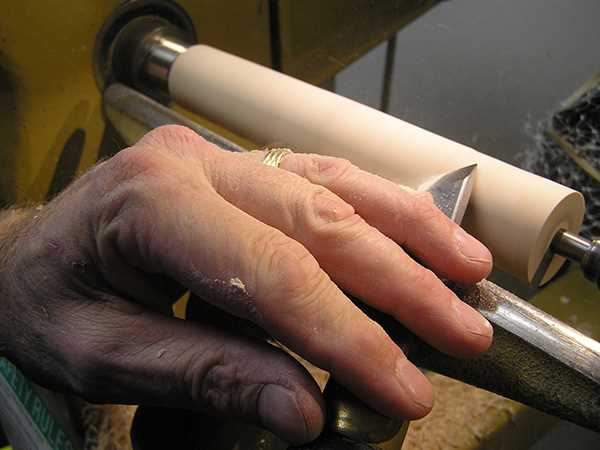
One of the most common and versatile techniques you can do with a skew chisel is making beads and coves. To make a bead, start by placing the skew chisel at a 45-degree angle to the wood and gently push it into the surface. As you move the chisel along the wood, rotate it slightly to create a rounded shape. To make a cove, start by placing the chisel at a 45-degree angle to the wood and gently push it in. Then, pivot the chisel on its side and create a concave shape by moving it along the wood.
2. Turning a Bowl
Using a skew chisel, you can also turn a bowl on a lathe. Start by mounting a blank on the lathe and use a roughing gouge to shape the outside of the bowl. Once the outside shape is roughed out, you can start using a skew chisel to refine the shape and create the hollow interior of the bowl. Use the skew chisel to create smooth curves and remove any tool marks. Take your time and constantly check the shape and symmetry of the bowl as you work.
3. Creating V-Grooves
To create V-grooves with a skew chisel, start by placing the chisel at an angle and pressing it into the wood to create a groove. Then, rotate the chisel on its side to widen the groove and create a V shape. Use the chisel to define the edges of the groove and create clean, crisp lines. V-grooves can be used for decorative purposes or to create textured surfaces on your turned projects.
4. Spindle Turning
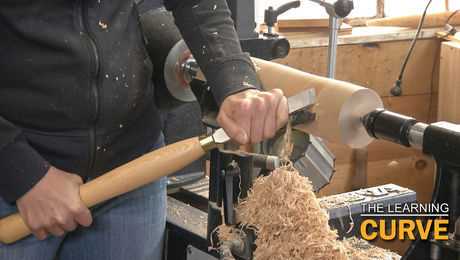
Spindle turning is another advanced technique that can be done with a skew chisel. This technique involves turning long, narrow pieces of wood to create items such as spindles, table legs, or candlesticks. Use the skew chisel to shape the wood by making controlled cuts and removing material. Take your time and try to maintain a smooth and consistent shape throughout the length of the spindle.
5. Inlaying Decorative Elements
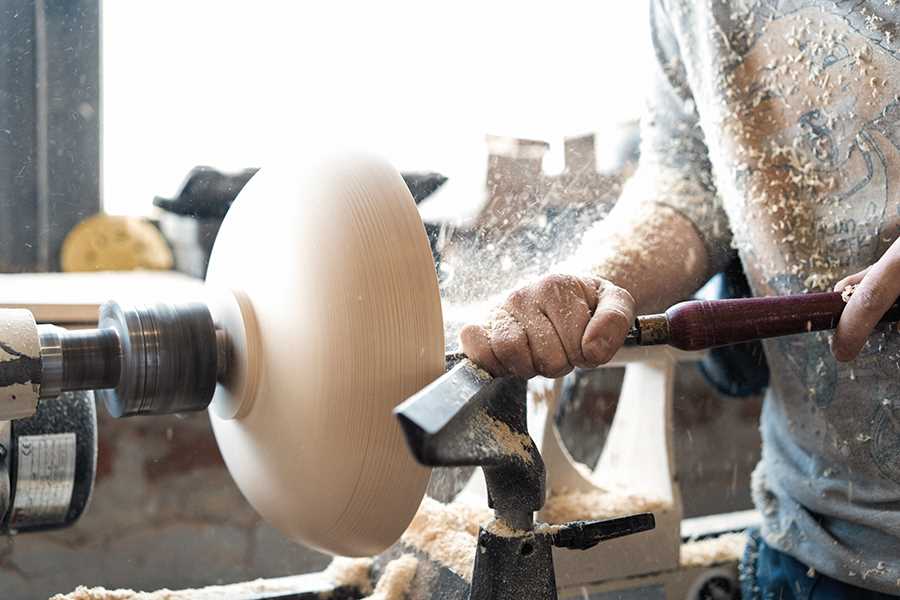
With the sharp point of a skew chisel, you can create decorative inlays on your turned projects. This technique involves carving small grooves or channels into the wood and filling them with contrasting materials such as epoxy, resin, or even crushed stone. Use the skew chisel to carefully carve the grooves, making sure they are clean and precise. Once the grooves are complete, fill them with the desired material and let it dry or set before sanding and finishing the piece.
6. Laminated Woodturning
Laminated woodturning involves gluing together different pieces of wood to create unique patterns and designs. The skew chisel can be used to turn and shape laminated wood to create bowls, vases, or other artistic pieces. When using a skew chisel on laminated wood, make sure to use light cuts and take your time to avoid tearing or chipping the different layers of wood. Pay close attention to the grain direction and work slowly and carefully to achieve the desired results.
| Tips |
|---|
| Always wear appropriate protective gear such as safety glasses and ear protection. |
| Maintain a sharp edge on your skew chisel for clean and safe cuts. |
| Always keep your hands behind the cutting edge to avoid injury. |
| Practice proper body positioning and balance to ensure stability while turning. |
| Take your time and work slowly to avoid accidents and mistakes. |
| Follow all manufacturer’s instructions and safety guidelines when using a lathe and skew chisel. |
FAQ
What is a skew chisel used for?
A skew chisel is used for turning wood on a lathe. It is primarily used for making smooth cuts and finishing surfaces.
How do you hold a skew chisel?
You will want to hold the skew chisel with a firm grip, with your hand close to the cutting edge. This will give you better control and accuracy when making cuts.
What are the different types of cuts you can make with a skew chisel?
There are several types of cuts you can make with a skew chisel, including V-cuts, scraping cuts, and chamfer cuts. Each cut creates a different effect on the wood surface.
What are the common mistakes to avoid when using a skew chisel?
Some common mistakes to avoid when using a skew chisel are applying too much pressure, not keeping the tool sharp, and not using the tool in the correct cutting position.
What are some tips for beginners using a skew chisel?
For beginners, it is important to start with a light touch and practice making small cuts. It is also helpful to watch tutorials or take a class to learn proper techniques and safety precautions.
Can a skew chisel be used on different types of wood?
Yes, a skew chisel can be used on different types of wood. However, it may require adjusting the cutting angle and speed depending on the hardness and grain of the wood.
Video










